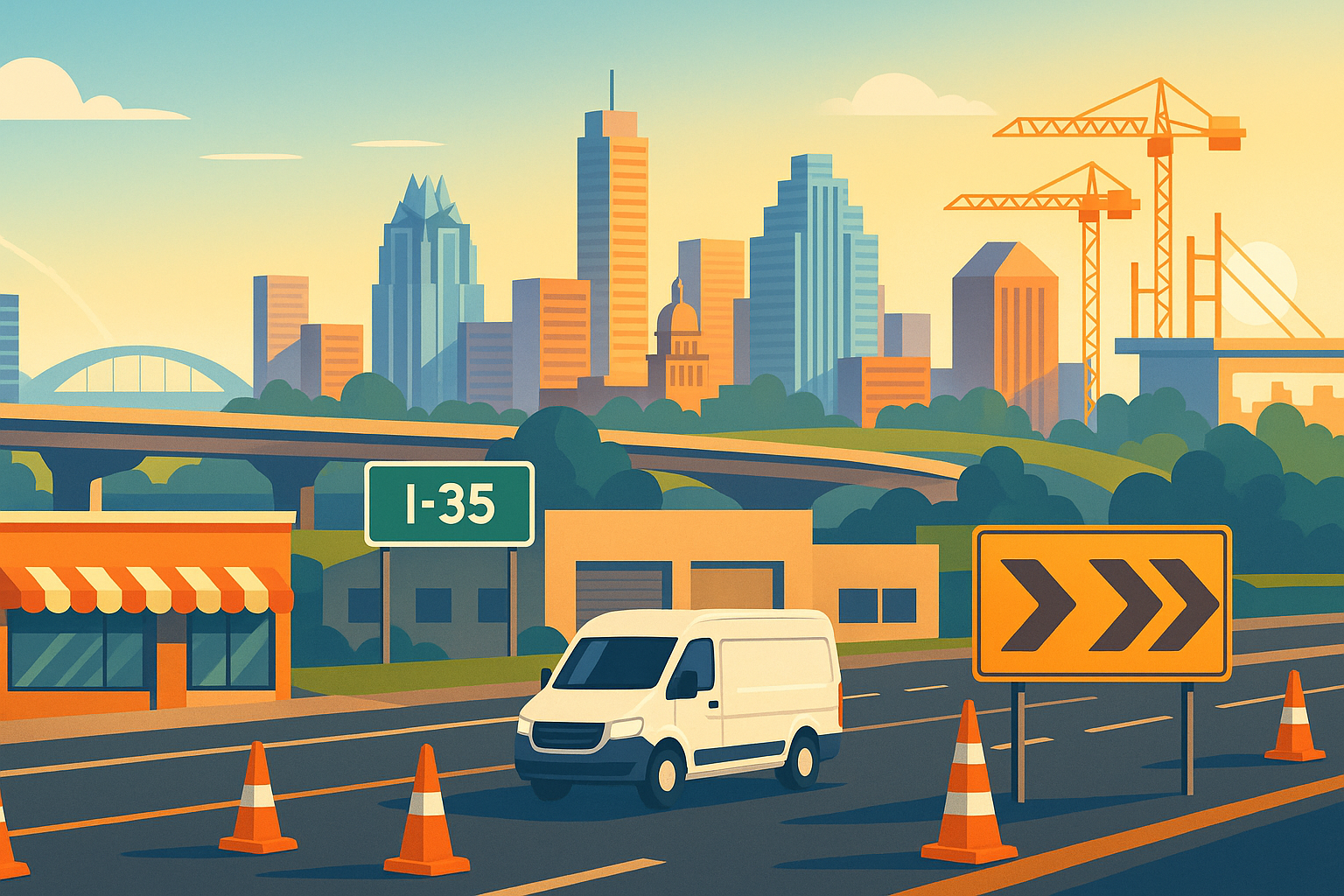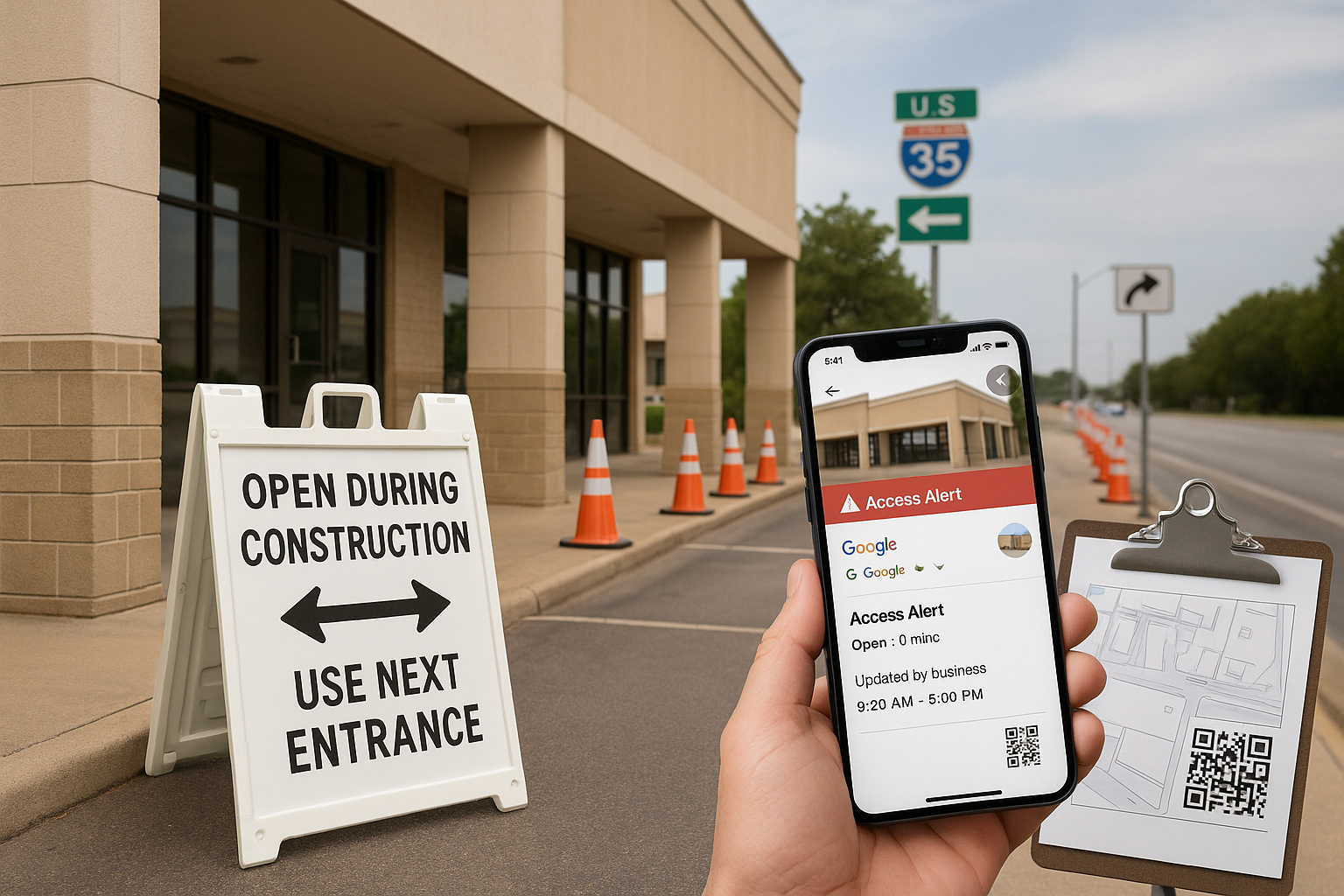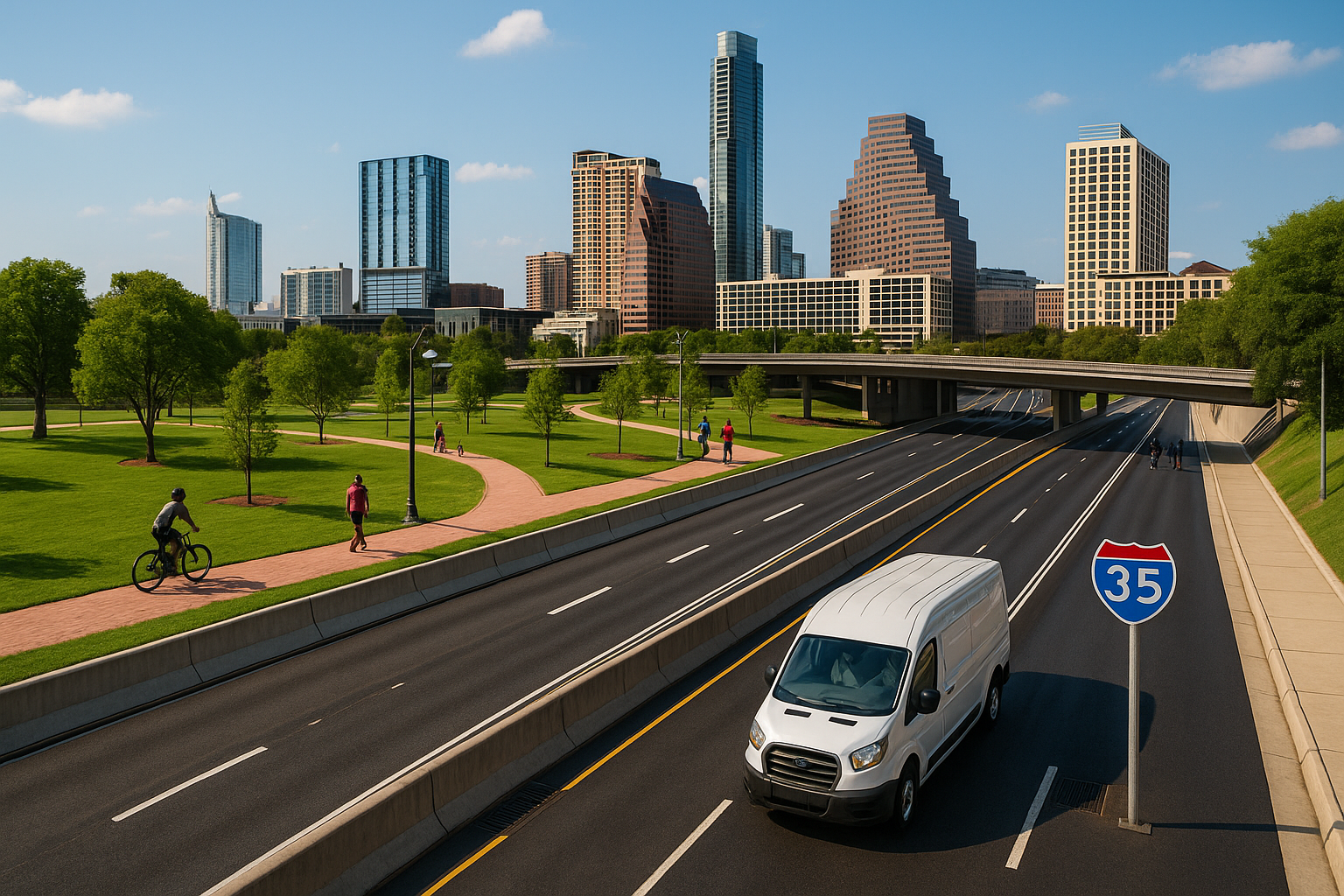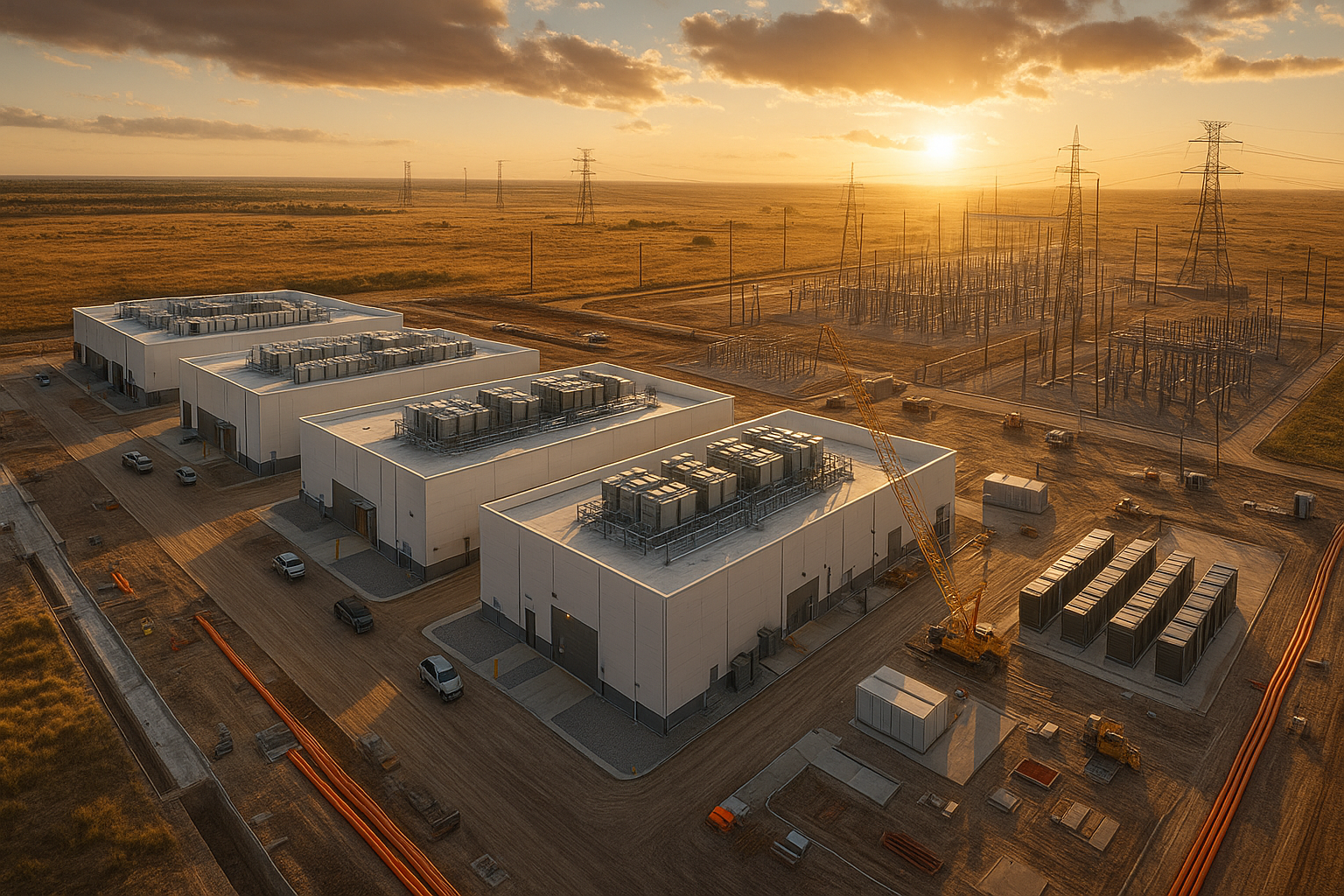November 18, 2025

Timeline, disruptions, mitigation—and why the project can be a long-term win
If you own or invest in Austin retail, flex, or last-mile space along the I-35 spine, you’re probably feeling the Capital Express rebuild. Below is the no-drama version of what’s closing when, where the pain shows up, how to protect access and revenue, and why this project should increase asset value when the dust settles.
Here is a quick timeline read:
- Three linked projects: North, Central, and South. Each is phasing construction with recurring nightly/mainlane closures and frontage-road lane reductions. Bookmark TxDOT’s MyMobility35 lane-closure map for weekly planning.
- CapEx North: Expect periodic one-lane frontage roads between SH-45N and Grand Ave Pkwy as widening continues through 2026.
- CapEx Central (downtown stretch): Ongoing bridge work (e.g., MLK Blvd segment) means overnight lane switches and a temporary pattern—two EB lanes, one WB lane + sidewalk—extended into late 2025.
- CapEx South: Rolling overnight mainlane closures (e.g., Ben White → Stassney) tied to elevated-lane work; weekend full shut periods pop up as milestones hit.
How this impacts your operations
Retail & QSR: frontage-road bottlenecks means fewer impulse stops and tougher right-in/right-out turns; delivery-app drivers can be misrouted on detours.
Destination/showroom: higher no-shows when lane shifts obscure the “easy” approach.
Flex/last-mile: missed carrier cutoffs when U-turns/driveways are coned or narrowed; staging conflicts on one-lane frontages near downtown and UT segments.
Medical/services: late arrivals cascade schedules during nightly mainlane shifts.
Your mitigation playbook
1) Keep access obvious
- Temporary approach signage: “Open During Construction / Use Next Entrance” with arrows for both directions; refresh after each traffic switch.
- Google Business Profile updates: Post Access Alerts (“Use NB frontage; turn at 53rd”) and adjust hours for closure nights.
- QR site map for drivers/vendors: One-pager showing current turn-ins, back-of-house routes, and staging; keep it synced to TxDOT’s weekly lane-closure map (linked above).

2) Retime deliveries & staffing
- Shift receiving away from the typical overnight closure windows; test mid-day or early afternoon drops when frontage volumes stabilize.
- Split loads: use smaller vans where tight curb radii or coned driveways make tractors inefficient.
3) Reduce customer friction
- Curbside/pick-up bays: cone-controlled, time-boxed slots on private drives.
- Appointment automation: add 10–15 minutes grace and auto-text detour directions 90 minutes before arrival on closure nights.
4) Coordinate center-wide
- Cross-access + shared signage MOUs between co-tenants/landlord for temporary drive use and wayfinding on common areas.
- Dock calendar: stagger box trucks when frontage is one lane to avoid gridlock.
5) Paper the risk now
- For renewals/LOIs during construction, tighten signage rights, delivery windows, co-tenancy cures, and ensure public-works closures fit force-majeure language. Add a small, time-boxed “construction marketing” CAM to maintain traffic.
The upside: why this can be great for your asset

We get it—construction is disruptive. But Capital Express isn’t just orange cones; it’s a structural upgrade to mobility and street life that can expand trade areas and tenant demand:
- More capacity + reliability: Added managed/HOV capacity and rebuilt frontage roads reduce choke points and smooth access patterns—good for last-mile cutoffs and customer catchments. (North adds an HOV each way; South builds elevated managed lanes; Central rebuilds main lanes.)
- Downtown reconnection via “Cap and Stitch”: Lowered main lanes and caps/stitches reconnect east–west streets, add bike/ped links, and enable new civic/green space—think higher foot traffic and better visibility for ground-floor retail. The City has advanced funding to future-proof these caps.
- Safer operations + drainage upgrades: Central includes drainage tunnel/pump work; fewer flood-related closures and a safer frontage experience help logistics consistency and insurance narratives.
- Marketing narrative on exit: “Construction risk is behind us; improved access + urban stitching” often translates to lower concessions, stronger retention, and rent upside in the first post-delivery leasing cycle. (We’ve seen this pattern on other Texas freeway modernizations.)
At the end of the day, the Capital Express work is a season—a disruptive season, yes, but manageable and ultimately accretive. Stay visible with simple access cues and live GBP updates, retime deliveries and staffing around closure windows, smooth the customer experience with easy pickup options and pre-arrival directions, and coordinate centerwide so docks and driveways don’t gridlock. Paper your leases for temporary construction realities, then keep your eye on the prize: added managed/HOV capacity and rebuilt frontage roads that expand trade areas, a re-stitched downtown via cap-and-stitch that boosts foot traffic and visibility, and safer, better-drained approaches that make last-mile more reliable. When cones come up, the market narrative flips to “access improved, risk behind us,” which tends to compress concessions and lift retention. If you want a plan tailored to your site geometry, tenant mix, and delivery schedule, CIP Texas is ready to build it with you now—so you protect revenue during construction and are first in line to capture the upside when it delivers.



